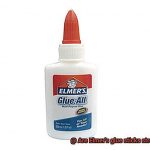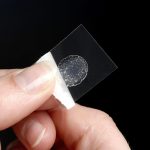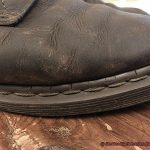Whether you’re a parent worried about what your kiddo is sticking together or a craft enthusiast on the hunt for non-toxic supplies, it’s crucial to know the ins and outs of the products we bring into our homes. In this post, we’ll dig deep into the nitty-gritty of Elmer’s glue sticks and find out if they’re truly as harmless as they claim to be.
We’ve got your back with all the deets you need to make smart choices for you and your loved ones.
What are Elmer’s Glue Sticks?
Contents
- 1 What are Elmer’s Glue Sticks?
- 2 Are Elmer’s Glue Sticks Non-Toxic?
- 3 Safety Certification of Elmer’s Glue Sticks
- 4 Benefits of Using Elmer’s Glue Sticks
- 5 Precautions to Take When Using Elmer’s Glue Sticks
- 6 Alternatives to Elmer’s Glue Sticks
- 7 Popular Uses of Elmer’s Glue Sticks
- 8 Cleaning Up Spills with Elmer’s Glue Stick
- 9 Conclusion
When it comes to adhesive products, nothing beats the reliability and versatility of Elmer’s Glue Sticks. Whether you’re a student with a school project, an artist bringing your vision to life, or a craft enthusiast looking for your next masterpiece, Elmer’s Glue Sticks are the go-to choice.
In this article, we’ll take a deep dive into the world of Elmer’s Glue Sticks, exploring their unique features, countless benefits, and why they are an absolute must-have in every crafting arsenal.
Versatile and User-Friendly:
Elmer’s Glue Sticks are specifically designed to bond lightweight materials like paper, cardboard, and fabrics. With their convenient stick form, reminiscent of a deodorant stick, these glue sticks offer a mess-free experience that is incredibly easy to control.
No more fretting about drips or spills. These adhesive wonders provide a strong and durable bond that dries quickly, allowing you to seamlessly continue working on your projects without any frustrating delays.
Safety First:
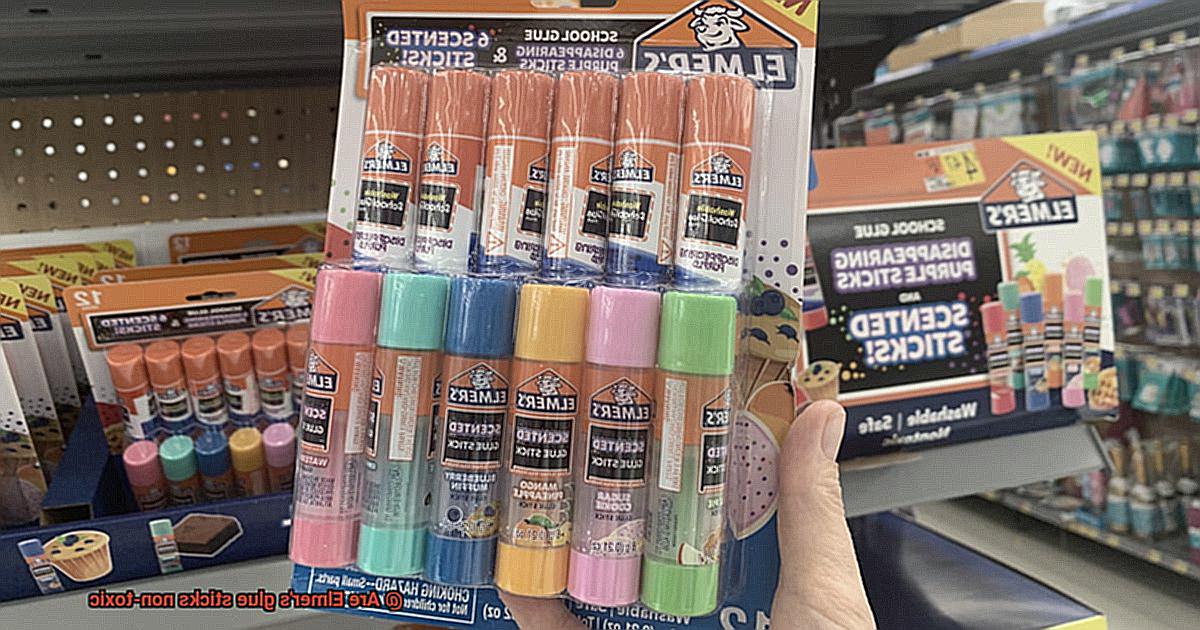
One of the standout features of Elmer’s Glue Sticks is their non-toxic formulation. Parents and teachers can breathe easy knowing that these glue sticks are safe for crafters of all ages.
Certified non-toxic by esteemed organizations like the Art and Creative Materials Institute (ACMI) and the American Society for Testing and Materials (ASTM), Elmer’s Glue Sticks pose no harm even if accidentally ingested. Plus, their water-based formula ensures effortless cleanup with just soap and water.
Packaging and Sustainability:
Elmer’s Glue Sticks come in ultra-convenient plastic tubes equipped with a clever twist mechanism at the bottom. This ingenious design allows you to effortlessly push up the glue stick as needed, minimizing waste and ensuring that you extract every last drop of adhesive goodness.
The tubes are thoughtfully labeled with vital product information and safety precautions, granting you peace of mind as you unleash your creativity.
Endless Possibilities:
Elmer’s Glue Sticks have rightfully earned their place as a crafting staple in classrooms, homes, and art studios worldwide. Their unrivaled versatility and dependable reliability make them the ideal choice for a vast array of projects, from school assignments and arts and crafts endeavors to the wonders of scrapbooking and more. With Elmer’s Glue Sticks by your side, your creative possibilities truly know no bounds.
Are Elmer’s Glue Sticks Non-Toxic?
Here, we will explore why Elmer’s glue sticks are considered non-toxic, making them the perfect choice for children and adults alike. Let’s dive in and discover the captivating world of Elmer’s glue sticks.
Water-Based Adhesive:
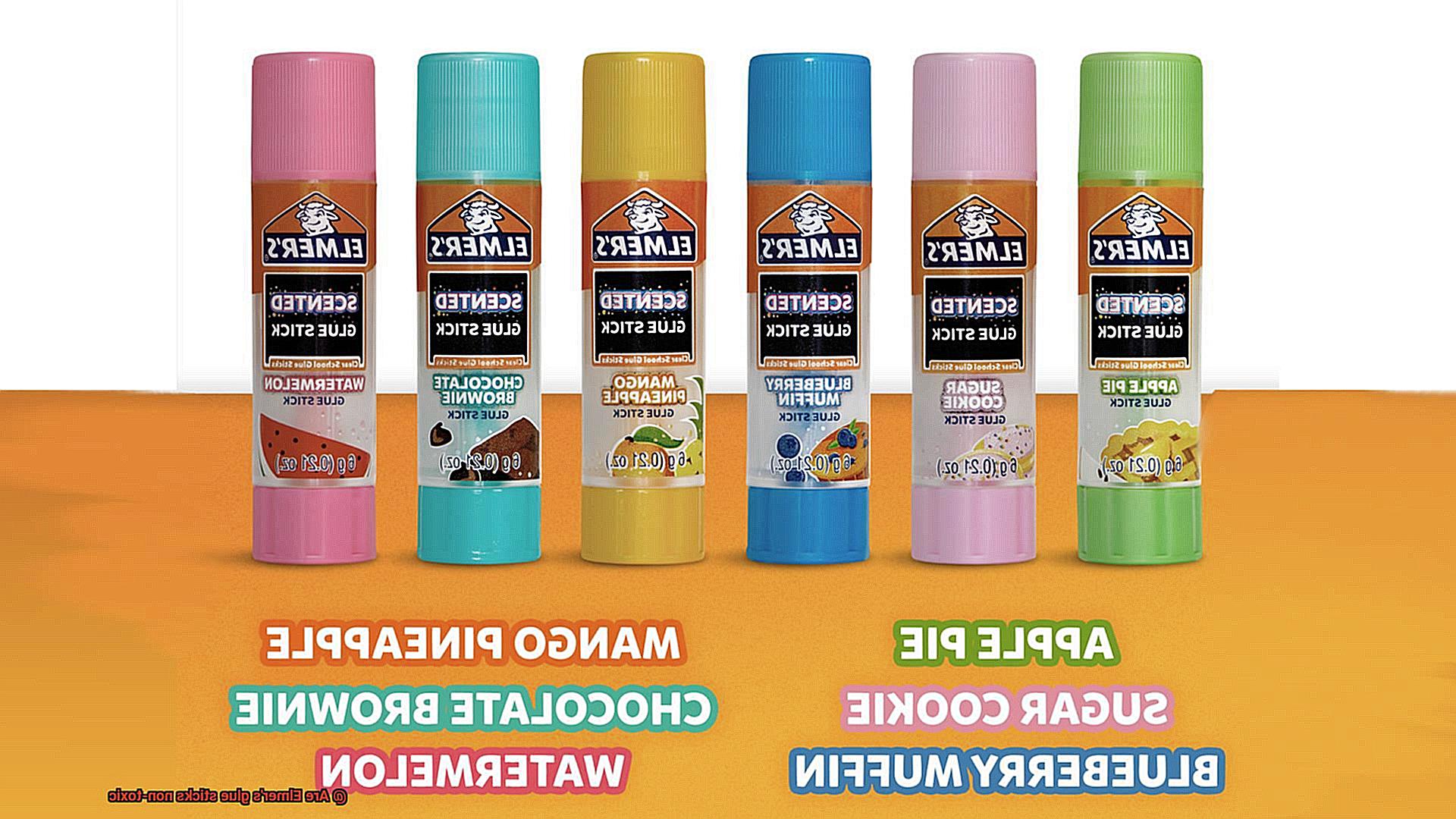
Elmer’s glue sticks derive their superpowers from a water-based adhesive. This means they contain no harmful chemicals or solvents that could pose a risk if ingested or inhaled. The water-based formula ensures easy application, quick drying, and a mess-free experience that will leave you spellbound.
Safety Certifications and Standards:
Elmer’s glue sticks soar above the rest when it comes to safety precautions. Many of their products have undergone rigorous testing and certification by the esteemed Art and Creative Materials Institute (ACMI). This prestigious certification guarantees that the glue sticks meet stringent safety requirements for art materials. Additionally, keep an eye out for the AP (Approved Product) seal proudly displayed on Elmer’s glue sticks. This seal is a testament to the product’s evaluation by medical experts who have deemed them safe for use.
Precautions:
While Elmer’s glue sticks possess extraordinary non-toxic qualities, it is crucial to handle them with care and adhere to their intended use. Avoid ingestion or contact with sensitive areas such as the eyes or skin. In case of accidental ingestion or eye contact, treat the situation seriously and seek immediate medical advice if any adverse reactions occur.
Safety Certification of Elmer’s Glue Sticks
Elmer’s glue sticks are a staple in the world of crafting and school projects. But as a responsible parent, teacher, or avid crafter, it’s only natural to wonder about the safety of these beloved glue sticks. Well, rest assured that Elmer’s takes safety seriously and goes through a rigorous certification process to ensure their glue sticks are safe for use.
First and foremost, Elmer’s glue sticks are certified as non-toxic by the Art and Creative Materials Institute (ACMI). This independent organization specializes in testing and certifying art materials for their safety. Glue sticks that bear the ACMI “AP” seal have undergone extensive testing for toxic materials such as heavy metals and allergens. This means that Elmer’s glue sticks are free from harmful substances, making them safe to use around children.
In addition to the ACMI certification, Elmer’s glue sticks also comply with the ASTM D4236 standard. This standard evaluates potential hazards and ensures that the product poses no acute or chronic health risks when used as intended. By meeting this standard, Elmer’s reinforces their commitment to providing users with a high level of assurance regarding the safety of their products.
But Elmer’s safety measures don’t stop at external certifications. They also conduct their own internal testing to ensure the highest safety standards are met. A dedicated team of scientists rigorously tests every batch of glue sticks, examining the ingredients used in the formula, evaluating potential allergens, and conducting various performance tests. This internal testing ensures that each glue stick meets Elmer’s stringent safety criteria.
To further promote safe usage, Elmer’s provides clear instructions and warnings on their glue stick packaging. These guidelines cover everything from proper application to storage and handling. By following these instructions carefully, users can enjoy a worry-free crafting experience.
While Elmer’s glue sticks are generally considered safe, it’s important to exercise caution, especially when young children are involved. Keep glue sticks out of their reach and supervise their use, as young kids may be more prone to putting things in their mouths. In case of accidental ingestion or any adverse reaction, seek medical attention immediately.
Benefits of Using Elmer’s Glue Sticks
Elmer’s glue sticks offer a multitude of benefits that simplify tasks and enhance efficiency, making them an essential tool for any gluing project. Let’s explore the advantages of using Elmer’s glue sticks in more detail.
First and foremost, Elmer’s glue sticks are renowned for their non-toxic formula. This crucial feature ensures the safety of users, particularly children, providing parents and educators with peace of mind. Certified non-toxic by the Art and Creative Materials Institute and meeting the ASTM D4236 standard, these glue sticks are free from harmful substances and health risks.

One of the most significant advantages of glue sticks is their solid form. Unlike liquid glues, glue sticks eliminate the risk of messy spills and sticky fingers. Say goodbye to ruined clothes and sticky desks. Moreover, their solid form allows for precise application without spreading or dripping, making them ideal for classroom settings, arts and crafts projects, and everyday use at home.
Another benefit of Elmer’s glue sticks is their clear drying feature. This characteristic is especially important for projects that require a clean and neat appearance. With Elmer’s glue sticks, you can achieve a professional finish without worrying about residue or marks being left behind on your surface.
In addition to mess-free application, these glue sticks provide a strong hold on lightweight materials such as paper, cardstock, and fabric. Rest assured that your projects will stay intact without any damage or warping to the materials being glued. This advantage is particularly valuable in school settings where students engage in various crafts and assignments.
Portability is another major advantage of using Elmer’s glue sticks. Compact and easy to carry around, they are convenient for on-the-go projects or situations where access to a traditional glue bottle may be limited. Keep one in your bag or pocket, and you’ll always be prepared for any gluing emergency.

Not only are glue sticks portable, but they also have a longer shelf life compared to liquid glues. The solid form minimizes evaporation, ensuring that the glue remains usable for an extended period. Stock up on Elmer’s glue sticks without concerns about them drying out quickly.
Last but not least, clean-up is a breeze with Elmer’s glue sticks. Unlike sticky and hard-to-remove liquid glues, glue stick adhesives can be easily wiped away with a damp cloth or sponge. No more laborious scrubbing or soaking required.
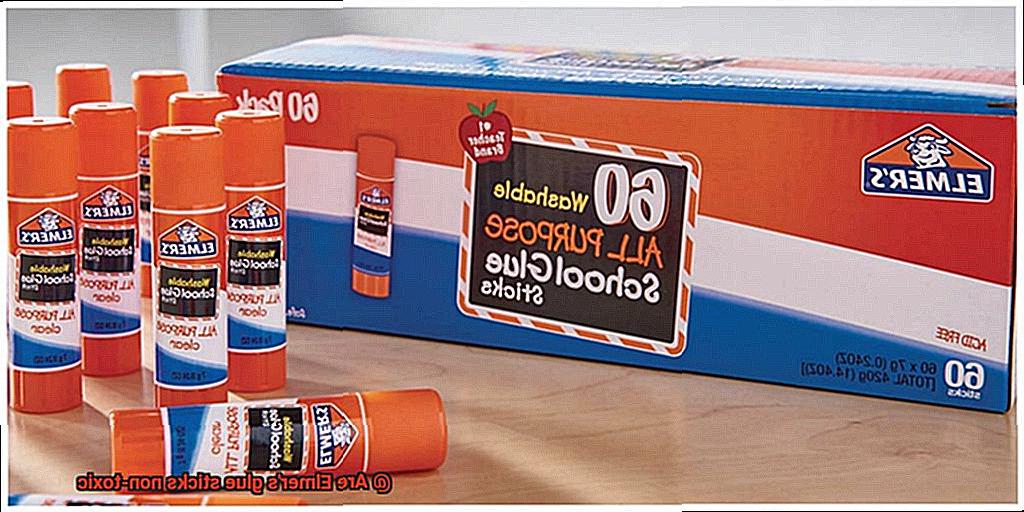
Precautions to Take When Using Elmer’s Glue Sticks
Elmer’s glue sticks are a popular choice among crafters and DIY enthusiasts due to their mess-free application and convenience. However, it is crucial to take certain precautions to ensure safety and achieve the best results. Here is a comprehensive list of precautions to keep in mind when using Elmer’s glue sticks:
- Read and Follow Instructions: Before using the glue stick, carefully read and adhere to the instructions provided on the packaging. This will provide essential information on proper usage and help avoid any potential risks.
- Use in a Well-Ventilated Area: Although Elmer’s glue sticks are generally safe, it is advisable to work in a well-ventilated space. This precautionary measure helps minimize any potential respiratory irritation, particularly when working on larger projects or for an extended period.
- Avoid Contact with Eyes, Mouth, and Open Wounds: Always keep the glue stick away from your eyes, mouth, and any open wounds. In case of accidental contact, immediately rinse the affected area with water and seek medical advice if necessary.
- Store Properly: To ensure the longevity and effectiveness of your glue stick, store it appropriately. Close the cap securely after each use to prevent drying out, and store it in a cool, dry place away from direct sunlight or extreme temperatures.
- Keep Out of Reach of Children and Pets: While Elmer’s glue sticks are non-toxic, ingesting large amounts can cause stomach discomfort or blockages. To prevent accidents, keep the glue stick out of reach of young children and pets.
- Clean Up Spills Promptly: In the event of accidental spills on surfaces or fabrics, clean them up promptly. Use a damp cloth or sponge to remove any excess glue, followed by washing the area with soap and water. Avoid using hot water as it can cause the glue to set.
- Be Mindful of Skin Sensitivities: Although Elmer’s glue sticks are generally gentle on the skin, prolonged exposure may cause mild irritation in some individuals. If you experience any discomfort or develop a rash, discontinue use and consult a healthcare professional.
- Consult a Healthcare Professional if Needed: If you have any specific concerns about using Elmer’s glue sticks, or if you or your child has a known allergy or sensitivity to certain ingredients, it is advisable to consult a healthcare professional before using the product.
Alternatives to Elmer’s Glue Sticks
Glue is the unsung hero of the crafting and DIY world, holding our projects together with quiet strength. While Elmer’s glue sticks have long been a reliable choice, there are numerous alternatives waiting to be explored. In this article, we will embark on a journey through the captivating realm of adhesives, uncovering a diverse range of alternatives that may become your new favorites. So, let’s delve into the exciting world of glue and discover the possibilities.
Liquid Glue: The Versatile Powerhouse
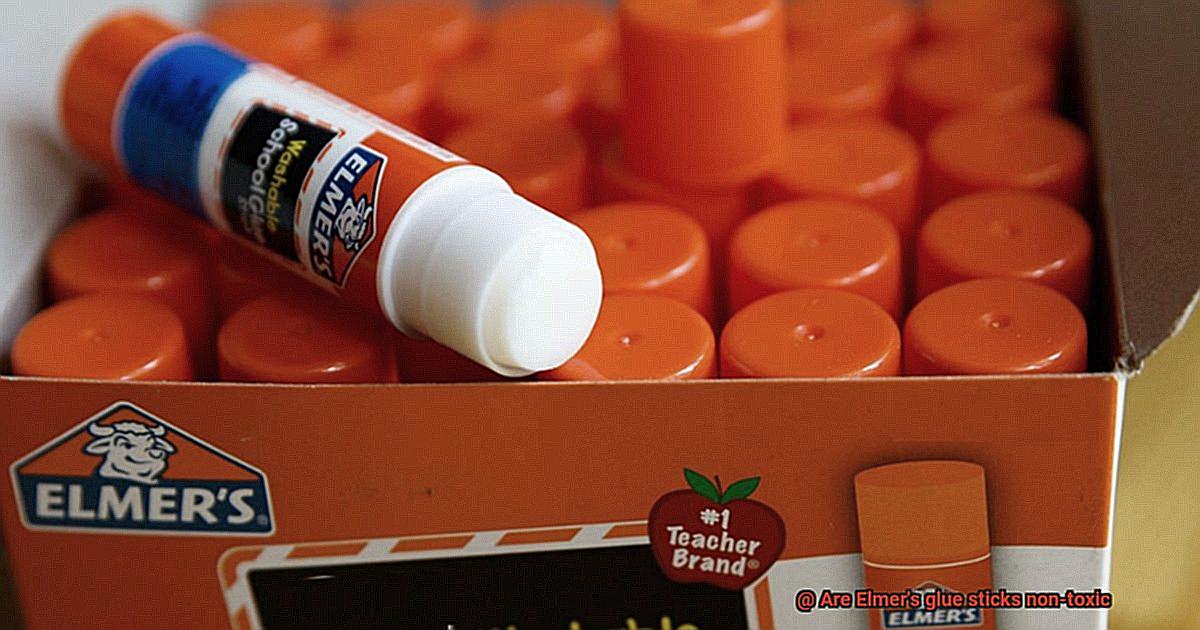
Liquid glue stands as a versatile alternative to Elmer’s glue sticks, offering a stronger bond for projects that demand durability. Whether you’re working with fabrics or heavier materials, liquid glue can handle them all. With precise application using a brush or applicator, it ensures an even coat every time, allowing for greater control and accuracy.
Glue Dots: Quick and Mess-Free
These small adhesive circles provide a hassle-free experience, offering convenience and ease of use. Ideal for lightweight materials, they adhere quickly and can be easily removed without leaving any residue behind. Glue dots are perfect for quick fixes or when you need instant adhesion on the go.

Hot Glue Guns: Unyielding Strength
When it comes to heavy-duty projects or items requiring exceptional durability, hot glue guns reign supreme. These powerhouses melt solid glue sticks and dispense them through a nozzle, creating a strong bond that dries rapidly. Perfect for attaching objects that need to withstand pressure or movement, hot glue guns offer unparalleled strength and reliability.
Double-Sided Tape: The Classic Choice
An enduring favorite among crafters, double-sided tape remains a versatile alternative to Elmer’s glue sticks. Effortlessly mess-free and requiring no drying time, it is the ideal choice for paper crafts, gift wrapping, and scrapbooking projects. Simply stick and go, enjoying the convenience and simplicity that double-sided tape brings.
Natural Adhesives: Embracing Sustainability
For environmentally conscious crafters, natural adhesives provide an eco-friendly alternative to Elmer’s glue sticks. Crafted from ingredients like starch or plant-based materials, these glues are non-toxic and biodegradable, offering a guilt-free option for your creative endeavors. By choosing natural adhesives, you can contribute to the preservation of our planet while pursuing your passion.
Repositionable Glue Sticks: Unleash Your Creativity
If your project demands flexibility and experimentation, repositionable glue sticks are the solution. These sticks allow you to adjust and experiment with your materials before they fully dry, offering endless possibilities for precision and creativity. Whether you’re working on intricate designs or intricate collages, repositionable glue sticks provide the freedom to explore and refine your ideas.
Popular Uses of Elmer’s Glue Sticks
Prepare to be amazed by the multitude of popular uses for Elmer’s Glue Sticks. Whether you’re an arts and crafts enthusiast, a DIY crafter, a scrapbooking pro, or even an office worker in need of a reliable adhesive, Elmer’s glue sticks have got you covered.
Let’s start with arts and crafts. Elmer’s glue sticks are a staple in any craft room. They provide a quick and mess-free way to adhere paper, cardboard, and other lightweight materials together. Kids love using glue sticks for school projects or making homemade cards and decorations. The easy-to-handle design and fast drying time make them perfect for little hands.
Next up is scrapbooking. Elmer’s glue sticks are a favorite among scrapbookers because they allow for precise application of adhesive. Whether you’re sticking down photos, papers, or embellishments, these glue sticks will keep everything securely in place. The quick drying time is especially handy when working on multiple pages of a scrapbook.
Teachers and educators also swear by Elmer’s glue sticks. They are commonly used in classrooms for various activities, such as making collages or assembling interactive learning materials. Glue sticks are easy to handle for young children and provide a mess-free alternative to liquid glue.
But the uses don’t stop there. Craft enthusiasts turn to glue sticks for all sorts of projects, from handmade invitations to fabric crafts. The adhesive properties of glue sticks make them suitable for bonding lightweight materials like ribbons, fabrics, and thin wood pieces.
Model-making aficionados also rely on Elmer’s glue sticks. Whether it’s building model airplanes, cars, or architectural structures, these glue sticks offer a precise and controlled method of bonding small parts together. Their ability to create a strong bond while allowing repositioning makes them ideal for intricate model-making.
Did you know that Elmer’s glue sticks can even come to the rescue in home repairs? They are perfect for fixing loose wallpaper edges or attaching lightweight trimmings. The ease of use and quick drying time make them a convenient option for small repair jobs around the house.
Now let’s talk about DIY crafting. Glue sticks are a go-to adhesive for creating handmade jewelry, decorating household items, and so much more. They can adhere various materials like beads, sequins, fabric, and even lightweight metals.
Fashion and costume designers also rely on Elmer’s glue sticks. They can be used to attach appliques, trims, or small embellishments onto fabric without leaving any visible residue. The non-toxic nature of these glue sticks ensures that they are safe to use even on delicate fabrics.
In the realm of paper crafting, glue sticks are a must-have tool. Whether you’re making origami or assembling paper models, these glue sticks provide a clean application without causing wrinkles or warping. Say goodbye to messy liquid glue.
Last but not least, glue sticks find their place in office settings as well. They are commonly used for tasks like assembling presentations, creating mood boards, or affixing notes to surfaces. The convenience of glue sticks allows for easy application without the risk of smudging or damaging important documents.
Cleaning Up Spills with Elmer’s Glue Stick
Cleaning up spills can be a daunting task, especially when it involves sticky substances like glue. Luckily, Elmer’s glue sticks are here to save the day. With their non-toxic formula and easy cleanup process, they are a must-have for any household or workspace.
So, how exactly do you clean up spills with Elmer’s glue sticks? Let’s break it down step by step:
First, allow the spilled glue to dry completely. This usually takes around 20-30 minutes, depending on the amount of glue and the temperature of the room. Once dry, grab a blunt object like a spoon or a plastic scraper, and gently scrape off any excess glue. Be careful not to scratch or damage the surface underneath.
If the spill is on fabric or clothing, gently scrape off any excess glue as mentioned before. Then, apply a small amount of liquid dish soap to the affected area and rub it in gently. Rinse with water to remove any remaining residue.
For spills on hard surfaces like countertops or tables, use a plastic scraper or your fingernail to lift the dried glue from the surface. Wipe away any remaining residue with a damp cloth or sponge.
Now, let’s tackle carpet spills. Start by allowing the glue to dry completely. Once dry, gently scrape off any excess glue using a blunt object. Then, mix equal parts white vinegar and water in a spray bottle and apply it to the stained area. Blot with a clean cloth until the stain is lifted.
Here are some additional tips for successful spill cleanup:
- Avoid using hot water or harsh chemicals, as they can cause damage to certain surfaces or fabrics.
- If there are stubborn stains or residue left after cleaning, repeat the process or consider using a specialized adhesive remover that is safe for the specific surface or material.
- Always test any cleaning solution on a small inconspicuous area before applying it to the entire affected surface to ensure there are no adverse reactions.
iS2nm9R0-T8″ >
Also Read: Is Elmer’s Glue Eco-Friendly?
Conclusion
Elmer’s glue sticks are indeed non-toxic, making them a safe choice for various crafting and school projects.
With Elmer’s, you can confidently stick things together without worrying about any negative health effects.



